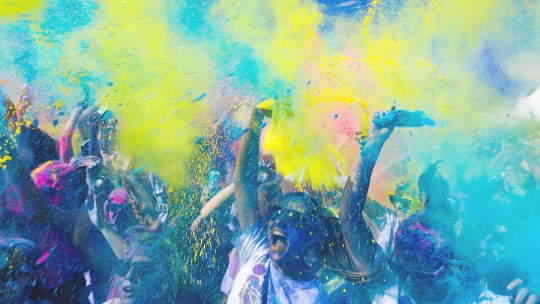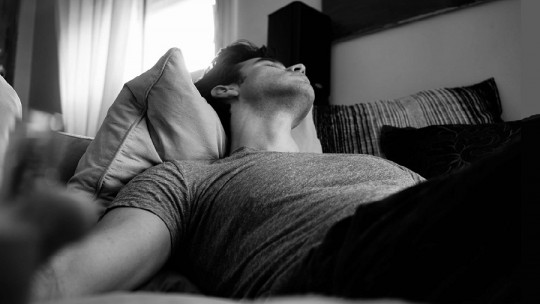The world of psychopathology is a complex world, and there are many disorders that human beings can experience Personality disorders, mood disorders, anxiety disorders… the latter are one of the most frequent reasons for psychological consultation.
Among the different types of anxiety disorders, phobias stand out, which are irrational fears that cause great discomfort and can seriously affect the life of the person who suffers from it.
In this article we will talk about a curious but rare phobia: agoraphobia or fear of colors (chromophobia). In the following lines we explain its causes, symptoms and treatment.
What is chromophobia
Phobias are irrational and persistent fears that are characterized by anxious symptoms that lead the person to experience the need to avoid the feared stimulus or escape from it. Phobias cause great discomfort, and can negatively affect the life of the person who suffers from this condition.
Phobic disorders are included within anxiety disorders, and there are different types as we explain in our article “Types of phobias: exploring fear disorders.” These pathologies are classified as complex phobias and simple phobias. Among the former we find social phobias and agoraphobia, and simple phobias are called specific phobias, in which the phobic stimulus is an object, situation or animal.
Chromophobia or fear of colors is a specific phobia that is characterized because the person who suffers from it feels an irrational fear of colors It varies from person to person, since each individual feels great discomfort in the presence of a specific color or several of them, to the point where visualizing that color in question makes them feel intense discomfort.
The most common types of chromophobia are usually xanthophobia, which is an irrational fear of the color yellow, or melanophobia, or an irrational fear of the color black. In many cases, superstitious ideas may be behind this phobia.
Causes
Phobias develop through learning, specifically a type of associative learning called classical conditioning, which was initially investigated by Ivan Pavlov and popularized by John Watson, an American psychologist. This occurs after a traumatic experience, and the person associates this painful event with a stimulus that was originally neutral , which ends up provoking the same response that caused the traumatic event. That is, extreme fear.
Other causes of fear of colors
But phobias can originate in different ways Another type of learning that is linked to the development of phobias is vicarious conditioning. That is to say, it is not necessary for the person to experience the traumatic event on their own skin, but rather the observation of an emotionally painful situation in another person can cause an individual to develop this pathology.
Phobia experts also argue that these disorders are common because human beings are biologically prepared to feel fear, since it is a highly adaptive emotion, which has served for the survival of the human species over the centuries. In this sense, fear originates from primitive associations in the primitive brain, and not from cognitive associations in the neocortex, which explains why phobics have serious difficulties in overcoming the disorder despite knowing that they suffer from it. Phobias do not respond to logical arguments.
Symptoms of phobias
The types of phobia vary depending on the phobic stimulus that elicits it. When we talk about arachnophobia, we are not referring to the fact that it is spiders that cause fear. In the case of aerophobia, it is the act of flying on an airplane that causes the discomfort. Now, the symptoms are common regardless of the type of phobia.
These symptoms are usually classified as cognitive, behavioral and physical. Cognitive symptoms include fear, distress, poor concentration, or catastrophic thoughts Regarding behavioral symptoms, avoidance and escape behaviors are common. Avoidance refers to not exposing oneself to the stimulus, which is not yet present. When we talk about escape, we refer to the act of leaving the situation in which the stimulus is present. The physical symptoms are varied, hyperventilation, hypersweating, headache, nausea, among other symptoms.
Treatment and therapy
Although phobias are common disorders, the prognosis for recovery is very positive. There is a lot of research that has been carried out to find out what is the best treatment in these cases.
According to scientific data, cognitive behavioral therapy appears to be the most effective. This form of therapy aims to modify those habits, behaviors and thoughts that lead a person to suffer from a mental disorder. To do this, different techniques are used, and for the treatment of phobias, two of the most common are relaxation techniques and exposure techniques.
Now, the technique par excellence is systematic desensitization, which combines the previous two and consists of exposing the patient to the feared stimulus gradually. The patient also learns different coping strategies that help him not avoid or escape the feared stimulus.
In addition to cognitive behavioral therapy, there are other types of therapy that have been found to be effective in treating phobias. The best known are cognitive therapy based on Mindfulness and acceptance and commitment therapy.
You can learn more in our articles:









